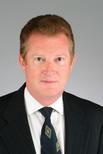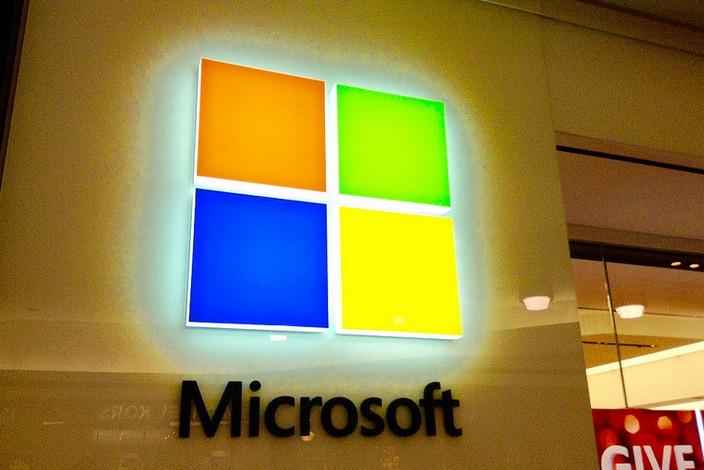The year seems to have gotten off on the wrong foot as the S&P 500 suffered a 3.1% decline for January.
That old market adage “as goes January so goes the year” will likely add to investor uncertainty and hence market volatility as it weighs on sentiment.

When January has registered a loss for the index after multiple years of gains it has not only usually led to a loss for the full year but has also foreshadowed recession in the subsequent year.
Election cycles
However, this would contradict another market trading pattern where the third year in the presidential cycle normally produces an outsized gain for the year.
Furthermore, the strongest part of that year for gains is historically now through June.
U.S. corporate earnings are under mounting pressure due to those twin culprits that we’ve mentioned previously: the stronger dollar and the collapse in oil prices.
Nevertheless, so far, an above-average 80% of companies has beaten fourth quarter earnings estimates. The overall earnings picture looks good when one excludes the disaster in energy and big bank earnings.
Unfortunately, first quarter S&P 500 earnings are expected to decline year-over-year [for the first time in two years] as analysts pare back estimates due mainly to energy sector earnings estimated to decline by more than 50%.
On the other hand, while the first look at fourth quarter GDP on Friday was a weaker than expected 2.6%, we are hesitant to make too much out of it and continue to believe that the final figure will exceed 3%
Euro
Last week the euro finally got a bounce for technical reasons (Fibonacci retracement) so that the dollar’s pullback helped commodities find a weak bid.
Yet it it wasn’t until a recent short-covering rally produced an 8% jump in crude oil prices that anything really exciting happened in commodities outside of gold.
We expect the dollar’s ascent to resume before long as the divergence in central bank monetary policy and the stronger U.S. economy continue to attract foreign fund flows searching for higher yield and relative safety.
Meanwhile, uncertainty over post-election Greece and the wait before the ECB actually initiates quantitative easing along with the downward spiral in commodity prices and slide in bond yields adds to the anxiety of market participants on the back of January’s losses in stocks.
Global outlook
For those of you that are beginning to feel a bit queasy, please recall that the S&P 500 delivered an 11.4% gain last year after a 3.6% decline in January, so another imminent market downturn is not fait accompli.
Nonetheless, whether it’s Greece, Ukraine, Russia, ISIS or another new or unknown emerging threat, headline geopolitical risk is unfortunately already proving to be the mainstay of 2015 that we feared it would be.
Expect the recent rise in market volatility to persist.
We were correct that the ECB would go “all in” last month by announcing a quantitative easing program to buy sovereign debt (beginning in March) in addition to the covered bonds and asset-backed securities already being purchased.
Global bond yields should be pushed down even lower as a result.
This kind of massive QE helped stimulate growth in the U.S. as corporations took advantage of record low interest rates to refinance and issue new debt in the large and liquid corporate bond market.
ECB
Unfortunately, most corporate financing in Europe is done through bank lending (the European capital markets are much smaller than in the U.S.) so the cost of capital for borrowers is unlikely to decline as a result of the ECB’s efforts.
This is why the ECB’s quantitative easing plan is destined to be far less effective than the Fed’s—raising the odds for eventual disappointment and/or additional measures.
As the ECB’s newly minted money looks for a home, we wouldn’t be surprised to see a substantial portion of it gravitate toward real estate (especially in Spain and Germany) to create new asset bubbles.
If we’re correct in our assessment, successful rejuvenation of European economic growth will be far more reliant on weakening the euro to enhance relative competitiveness than influencing the credit market.
As an aside, we reiterate that there’s virtually no chance that Greece will leave the Eurozone despite the victory by the anti-austerity Syriza party. In spite of all the political rhetoric surrounding debt negotiations, a compromise will be reached.
China
China’s GDP for the fourth quarter came in as we expected (7.3%) and grew 7.4% for the year, beating the consensus forecast.
The World Bank forecasts China’s real GDP growth slowing to 7.1% this year followed by a more modest 0.1% slowdown to 7.0% in 2016.
Estimates for China and most other countries have been steadily dialed back by the World Bank (along with the IMF, OECD and virtually every other economic forecasting organization worldwide) since last spring.
Besides fanning fears of global deflation, this has once again emboldened China’s naysayers who have repeatedly called for a hard landing or outright collapse of China’s economy for years.
We believe otherwise; fears that China’s growth rate will collapse in 2015 are likely overdone since lower oil prices will probably add about 0.5% to this year’s GDP to help offset potentially weaker exports.
Still impressive
Nevertheless, the slowing property and manufacturing sectors are depressing the economy’s growth rate, which increases the odds of further stimulus as China is tempted to join central bankers around the world in their “race to the bottom”.
The law of large numbers was always destined to come into play and slow China’s rate of growth.
As Beijing continues to de-emphasize absolute growth as the prime determinant of success for the Party’s economic plan, we believe that the odds for successful implementation of reform materially rise.
The media will surely continue drawing negative inferences and conclusions by highlighting the slowest economic growth in more than two decades juxtaposed to the double digit growth of an earlier era; for them the glass is always half empty.
We didn’t make any changes to the Conservative Tactical Macro portfolio during the month of January. While our overall outlook for 2015 remains positive, it will undoubtedly be a more volatile path to higher asset prices this year.
Photo Credit: Jonathan Kos-Read via Flickr Creative Commons
DISCLAIMER: The investments discussed are held in client accounts as of January 31, 2014. These investments may or may not be currently held in client accounts. The reader should not assume that any investments identified were or will be profitable or that any investment recommendations or investment decisions we make in the future will be profitable. Past performance is no guarantee of future results.


